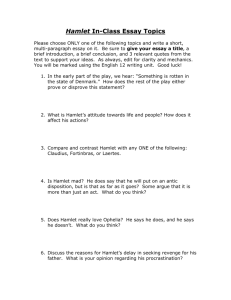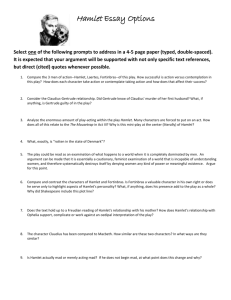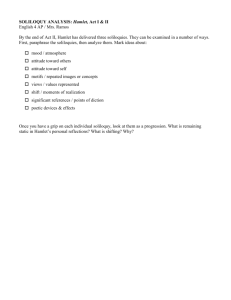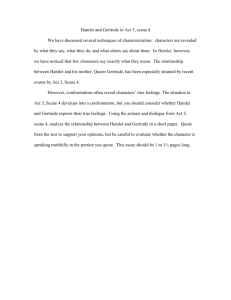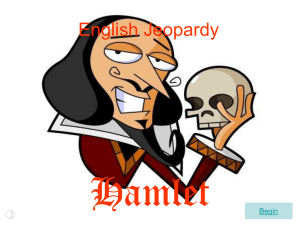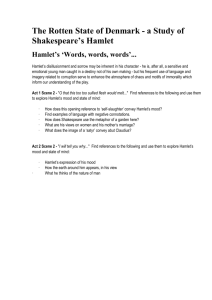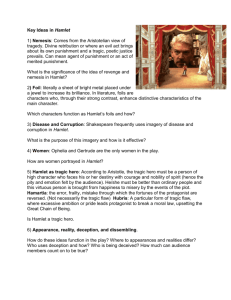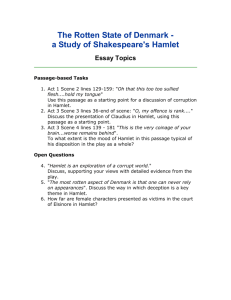Hamlet - mathewsenglish
advertisement
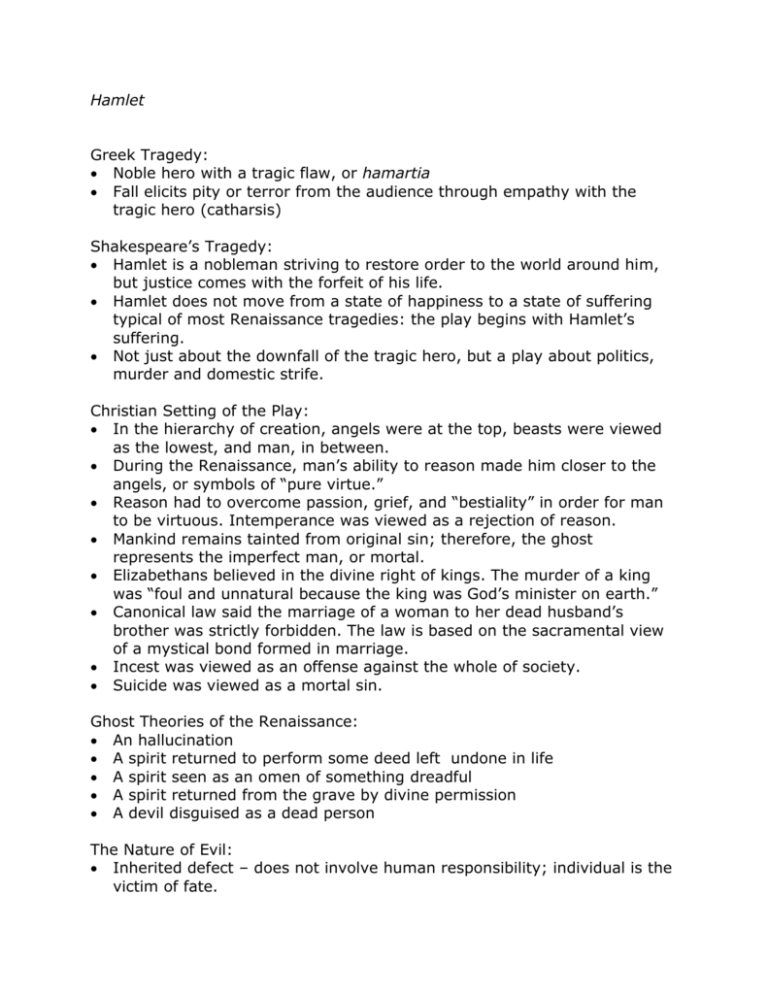
Hamlet Greek Tragedy: Noble hero with a tragic flaw, or hamartia Fall elicits pity or terror from the audience through empathy with the tragic hero (catharsis) Shakespeare’s Tragedy: Hamlet is a nobleman striving to restore order to the world around him, but justice comes with the forfeit of his life. Hamlet does not move from a state of happiness to a state of suffering typical of most Renaissance tragedies: the play begins with Hamlet’s suffering. Not just about the downfall of the tragic hero, but a play about politics, murder and domestic strife. Christian Setting of the Play: In the hierarchy of creation, angels were at the top, beasts were viewed as the lowest, and man, in between. During the Renaissance, man’s ability to reason made him closer to the angels, or symbols of “pure virtue.” Reason had to overcome passion, grief, and “bestiality” in order for man to be virtuous. Intemperance was viewed as a rejection of reason. Mankind remains tainted from original sin; therefore, the ghost represents the imperfect man, or mortal. Elizabethans believed in the divine right of kings. The murder of a king was “foul and unnatural because the king was God’s minister on earth.” Canonical law said the marriage of a woman to her dead husband’s brother was strictly forbidden. The law is based on the sacramental view of a mystical bond formed in marriage. Incest was viewed as an offense against the whole of society. Suicide was viewed as a mortal sin. Ghost Theories of the Renaissance: An hallucination A spirit returned to perform some deed left undone in life A spirit seen as an omen of something dreadful A spirit returned from the grave by divine permission A devil disguised as a dead person The Nature of Evil: Inherited defect – does not involve human responsibility; individual is the victim of fate. Complexions – based on the belief in the four humours; sanguine, melancholic, choleric and phlegmatic. Intellectuals were especially susceptible to melancholy. “According to the theorists, the melancholy individual was prone to dwelling at inordinate length upon his difficulties, real or imagined; but, so far from remaining lethargic, he often would become hysterical and would act impulsively.” Man possesses “habits” or flaws that overthrow reason. Renaissance Beliefs: Reason led to virtue. Order led to reason. Properly tended gardens showed an orderly world. Love was an ideal; lust was a rejection of God-given reason. Major Themes: Revenge: Hamlet questions whether or not to avenge his father’s death. His inner turmoil stems from his concern with right and wrong on religious, moral and political grounds. Appearance vs. Reality: True and false friends, players assume new identities. Claudius appears to be a true and just king and Gertrude his virtuous queen. Pay close attention to references to “seems”, “shows”, “plays” and “practices.” Also, carefully examine the role of the acting troupe in the play as well as Polonius’ words and actions. Sanity vs. Insanity: Is Hamlet really insane? Or does he show clarity of thought? Decay and Corruption: Personal terms for Hamlet; political terms for Denmark. Pay close attention to the references to decay in the play. Shakespeare’s Terminology: Fishmonger: fisherman, “bait of falsehood” Nunnery: also Elizabethan slang for a brothel Conscience: also meant consequences Framework of the Play: King Hamlet (Denmark) is dead. King Fortinbras (Norway) was killed by King Hamlet. Prince Hamlet (a man of contemplation) contrasts with Prince Fortinbras (a man of action). Fortinbras’ uncle persuades the Prince not to not attack the Danes, but attack the Poles instead. Claudius, King Hamlet’s brother, marries Queen Gertrude within two months after her husband’s death. A student in Wittenburg, Germany, Prince Hamlet returns to Denmark after he learns of his father’s death to discover his mother has married his uncle. Elsinore is the castle of King Hamlet.
